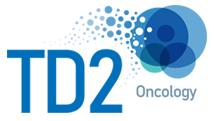As researchers advance our collective understanding of the molecular underpinnings of cancer, it has resulted in an absolute boon of discoveries for new therapies and drugs. But despite those advancements, curing cancer remains (and will continue to remain) one of the biggest hurdles for medical science.That’s because even with regulatory changes and a new wave of research-enabling technology, cancer researchers still face a mighty quintet of challenges when it comes to getting their research to the market:
1. Establishing a Clinical Strategy
Without a strong clinical strategy, even the most effective drugs can fail. The most successful researchers take time to understand the full context of the project before launching their go-to-market plan. This typically starts with a thorough assessment of the drug’s mechanism of action, both scientifically and opportunistically in alignment with the market.
2. Accelerating Progress
Speed-to-market has always been a priority for oncology research, mostly because drug approvals aren’t quite known for their fast pace: The average time to take a new drug to market is about 10 years.
While the FDA will indeed take the time it needs to review safety and efficacy, there’s a lot that researchers can do to quicken the process, from filing a Fast-Track Designation Request to preemptively resolving issues with a comprehensive Investigative New Drug (IND) application.
3. Complying with Regulatory Guidelines
Regulatory compliance poses a significant challenge for many drug makers, and can be a major source of churn between submission and approval. To overcome that challenge, successful sponsors mind the big regulatory milestones, but the finer details too: from ensuring that drug labeling follows FDA guidelines to amply preparing for the review meeting and crafting post-market safety updates efficiently and accurately.
4. Selecting the Right Models for Preclinical Research
Quality trumps quantity when it comes to preclinical model selection. Still, finding quality, molecularly defined animal models that recapitulate tumor-promoting cancer drivers presents a challenge for many sponsors because they may have an infinite quantity available, but no narrow filters from which to choose them.
Successful researchers engage model selection filters based on their drug’s individual mechanism of actions—often with the support of advanced technologies to strike out irrelevant models before finding the right ones.
5. Inadvertent Bias
Without structure, inadvertent bias can sneak into projects—causing a cascade of challenges from preclinical launch through clinical study. For example, researchers may hold to a single indication strategy without maintaining an open mind for other alternatives.
Or later on down the road, bias can again sneak into research efforts when it comes to clinical trial strategies, such as investigational site selection. Using community oncology clinics may not be a researcher’s first choice, for example, but they often have talented researchers and a strong enrollment record. In that case, the bias for larger institutions hinders progress.
Indeed, oncology research has come a long way from the broadly defined approaches of yesteryear, but we still have a long way to go. By recognizing the challenges ahead of us, we can help make progress happen more quickly and more fully for patients, providers and sponsors alike.


